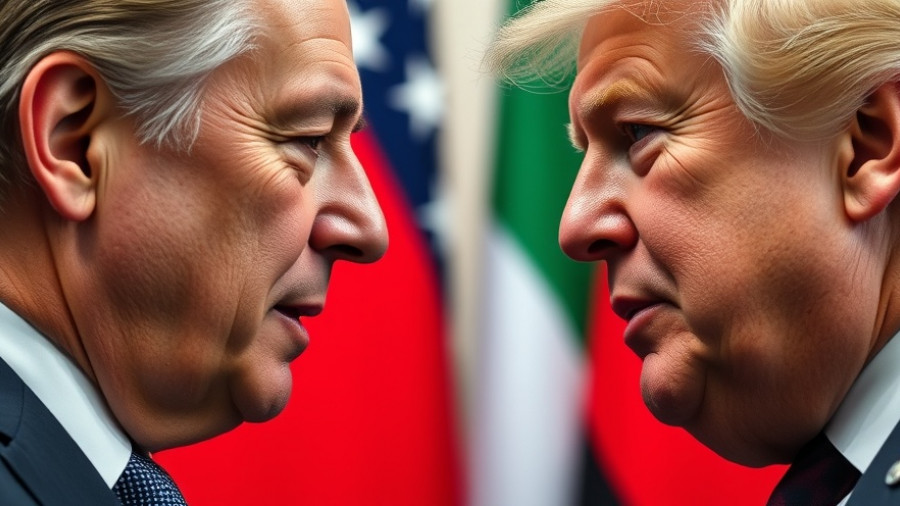
U.S.-India Trade Deal: A Historic Shift in Economic Partnership
Amid evolving global economic dynamics, the anticipated U.S.-India trade deal represents a significant turning point that could reshape not just bilateral relations but also the broader landscape of international trade. As reports circulate about the U.S. planning to cut tariffs on Indian imports from a staggering 50% to a more palatable 15-16%, it becomes essential to understand what is motivating these changes and the implications for business owners and investors alike.
Strategic Alliances in Geopolitical Context
The proposed trade deal has strategic underpinnings aimed at curtailing dependence on Russian energy. For Washington, encouraging India to diversify its oil sources is a critical geopolitical strategy amidst ongoing tensions with Russia. Approximately one-third of India's crude oil imports currently come from Russia. By reducing this reliance, the U.S. is not only targeting Moscow's revenue streams but also strengthening its ties with New Delhi, particularly as tensions with China escalate.
Economic Benefits and Opportunities for Indian Enterprises
For Indian exporters, this could mark a revival moment. The lower tariffs would not only enhance competitiveness in various sectors, including textiles, pharmaceuticals, and engineering goods, but it would also facilitate a wider market presence in the U.S. As India aims to bolster its 'Make in India' initiative, a conducive trading environment could stimulate domestic manufacturing and innovation.
Challenges Ahead: Balancing Domestic Interests and Global Expectations
Despite the promising potential of this trade agreement, considerable challenges remain. Politically sensitive areas, particularly agriculture and dairy sectors, may face resistance as India considers easing its market barriers for U.S. products. Conversely, American lawmakers are likely to demand stricter intellectual property protections and trade reforms which could complicate negotiations.
Future Directions: Will the Deal Set a Precedent for Global Trade?
If finalized, this agreement could serve as a template for future trade deals—linking tariff concessions to strategic commitments, such as reducing energy dependence. Such a framework may influence how global commerce evolves, suggesting that geopolitical considerations will increasingly dictate trade agreements in the coming years.
As both nations navigate the complexities of this deal, stakeholders—particularly executives, business owners, and investors—should prepare for the potential shifts in market dynamics and consider how they might optimize capital structures and operational strategies to leverage upcoming opportunities or mitigate risks.
Final Thoughts: Preparing for a Transformative Relationship
In an era where geopolitical factors heavily influence economic partnerships, business leaders must adapt to rapidly changing conditions. This U.S.-India trade deal represents more than just revived economic ties; it is a call to action for business owners to critically assess their operational frameworks, capital requirements, and market engagements. As the discussions progress toward a potential agreement, the implications could set the stage for a new phase in international trade.
 Add Row
Add Row  Add Element
Add Element 



Write A Comment